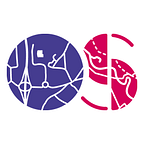A practical guide to spatial data
This guide to spatial data focuses on physical space and symbolic depictions of it on the scale most familiar to humans: geographic maps. Ordnance Survey has been making maps and collecting location data for centuries. We have always operated at the cutting edge of cartography, and remain committed to this tradition of innovation as we look forward into the 21st century.
Our goal in creating this resource is to provide competent programmers and analytical thinkers with a strong grounding in the theory of spatial data so they can build and develop sophisticated applied uses of that data.
This is a practical guide aimed at web developers and data scientists but non-technical users should also find it useful and easy to understand. It links to external resources whenever possible to give you the opportunity to further the topics covered. It also directs you to useful tutorials for a bit of hands-on experience.
Contents
Maps are incredibly useful things. We use them to understand reality, to aid navigation, to make sense of where we are — without maps, we are, quite often, lost. Maps are tools we have come to rely on to survive and thrive.
What is a map? Wikipedia puts it concisely: “A map is a symbolic depiction emphasizing relationships between elements of some space.” This definition captures the breadth of things we describe as “maps”: from the traditional — paper OS Landranger maps that hikers use to explore areas like the Scottish Highlands — to the more conceptual — a mind map of ideas around a topic, or a site map of pages within a website, or a map representing a network of firms competing in a market.
In every case, accurate maps can help us to understand a space in a more complete way than we can by simply observing it directly. Mapmakers design abstract representations of a defined space and the features within it.
